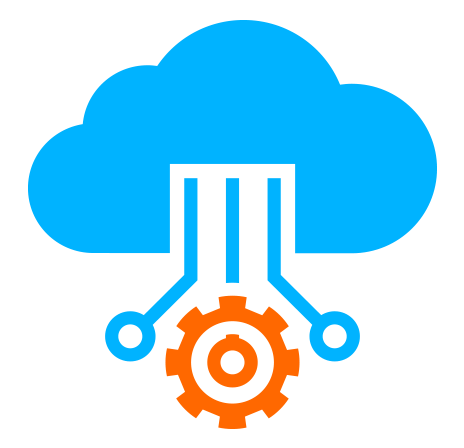 Server Colocation
Server Colocation
 CDN Network
CDN Network
 Linux Cloud Hosting
Linux Cloud Hosting
 VMware Public Cloud
VMware Public Cloud
 Multi-Cloud Hosting
Multi-Cloud Hosting
 Cloud Server Hosting
Cloud Server Hosting
 Kubernetes
Kubernetes
 API Gateway
API Gateway

Data isn’t just growing—it’s exploding. According to IDC, the global datasphere is expected to reach 175 zettabytes by 2025, up from 64.2 zettabytes in 2020. That’s not just a staggering statistic—it’s a wake-up call for businesses trying to manage, store, and secure ever-increasing volumes of digital information.
Whether it’s raw customer data, high-resolution media files, compliance documents, or logs from thousands of IoT devices, storing this data securely and affordably is no longer a back-office concern—it’s a core business priority.
Yet here’s the twist: most businesses don’t really understand what they’re paying for when it comes to storage. They see a monthly invoice or a line item on a cloud bill and just assume it’s a sunk cost. But by breaking down storage pricing, organizations can optimize how—and how much—they store, potentially saving thousands (if not lakhs) annually.
In this blog, we’ll explore the real cost components behind business data storage, compare different storage models, and show how providers like Cyfuture Cloud are helping companies make smarter, cost-effective decisions with server hosting and storage solutions that scale with business needs.
When you think about storage pricing, don’t just think in terms of gigabytes or terabytes. That’s only part of the story. The actual cost of storing business data includes:
Raw storage: The price of disk space (HDD, SSD, NVMe)
Access frequency: How often you read/write data (hot, warm, or cold storage)
Redundancy & replication: The extra cost of ensuring availability and durability
Network transfer: The cost of moving data in/out of cloud platforms
Security & compliance: Data encryption, audit logs, access controls
Support & management: Tools and human oversight for monitoring storage health
Let’s break down these costs one by one, so you can estimate and control your monthly or annual spend.
Used in: Databases, mission-critical applications
Ideal for: High-performance requirements
Cost Range: ₹4–₹8 per GB/month
Block storage divides data into raw volumes and treats them like individual hard drives. It’s typically faster and more flexible, but often more expensive.
Cyfuture Cloud offers block-level storage that integrates seamlessly with their cloud server hosting, making it suitable for applications that demand rapid IOPS (input/output operations per second).
Used in: Backups, media files, unstructured data
Ideal for: Scalable, long-term storage
Cost Range: ₹1.5–₹3 per GB/month
Object storage is built for scale and is widely used for cloud-native applications. Pricing often varies depending on:
Access tier (standard, infrequent access, or archival)
API request count
Data egress
Providers like Cyfuture Cloud provide hot, warm, and cold object storage tiers, allowing businesses to assign cost-effective storage policies depending on data lifecycle needs.
Used in: Shared file systems, content management
Ideal for: Teams needing simultaneous access
Cost Range: ₹3–₹6 per GB/month
While not as scalable as object storage, file storage replicates the familiar file-and-folder hierarchy. Think of it like Dropbox, but for enterprise infrastructure.
Still maintaining your own servers in a local rack or server room? Here’s how costs break down:
Hardware (servers, RAID systems): High upfront capital expenditure
Power & cooling: Hidden operational costs that add up quickly
Maintenance: Internal IT team salaries, software licenses, disk replacements
Scalability limits: Upgrades take time, budget, and human effort
Even though it might seem “cheaper” upfront, on-prem solutions become costlier and riskier as your data grows.
OPEX model: Pay only for what you use
Built-in redundancy: No need to pay for backup infrastructure separately
Elastic scaling: Add or remove capacity instantly
Automated management: AI-based monitoring, alerts, and healing
Cyfuture Cloud, for example, offers hybrid storage models combining on-prem control with cloud scalability—especially useful for businesses dealing with sensitive or regulated data.
When estimating storage pricing, businesses often miss the hidden charges. Here’s what you should always ask your provider about:
Ingress (upload) is usually free
Egress (download) may cost ₹5–₹12 per GB, especially across regions or platforms
Especially in object storage, repeated GET/PUT requests may be charged after a certain threshold.
Automated backups and snapshot capabilities are often priced separately. Still, they’re worth it to avoid complete data loss scenarios.
If you want data mirrored across multiple locations for disaster recovery (DR), you’ll likely pay an extra ₹1–₹2 per GB/month depending on the provider and SLA.
Many providers offer “cheap” storage, but the final invoice often tells a different story. Cyfuture Cloud takes a transparent, modular approach to storage pricing, which includes:
Predefined plans based on storage type and access frequency
Real-time analytics to show usage trends and help prevent overruns
Bundled storage with hosting for a cost-effective, performance-optimized experience
Tiered backups and DR options with granular control over RTO and RPO
What sets them apart? Their infrastructure is fully Indian-owned and MeitY-empaneled, meaning your data stays compliant with local regulations without compromising on global standards.
Want a quick formula to estimate your monthly storage bill?
Here’s a simplified model:
Total Cost = (Storage GB x ₹/GB) + (Egress GB x ₹/GB) + (API Requests) + (Backup Fees) + (Support Tier)
Example Scenario:
2 TB of object storage at ₹2.5/GB = ₹5,000
300 GB egress at ₹6/GB = ₹1,800
Backup: ₹1,200/month
Support: Included
Total = ₹8,000/month
Of course, this varies with your application type, data access needs, compliance obligations, and disaster recovery strategy. But with the right provider, you can tweak each component to suit your operational and budgetary needs.
Let’s face it—businesses today generate more data than ever before. But storing that data doesn’t have to mean burning through your IT budget. By understanding what goes into storage pricing, you gain better control over your infrastructure and avoid the common pitfalls of overpaying for underused capacity.
Whether you're running high-performance databases, building AI models, or simply need a place to keep years of transaction records, the key is to choose the right storage type—and a provider that offers clarity and flexibility.
Cyfuture Cloud stands out with its India-first infrastructure, modular pricing, and support for hybrid deployments. If you're trying to plan your server hosting, backups, and data growth over the next 12–24 months, this is a conversation worth starting now—not after the bill surprises you.

Let’s talk about the future, and make it happen!
By continuing to use and navigate this website, you are agreeing to the use of cookies.
Find out more


